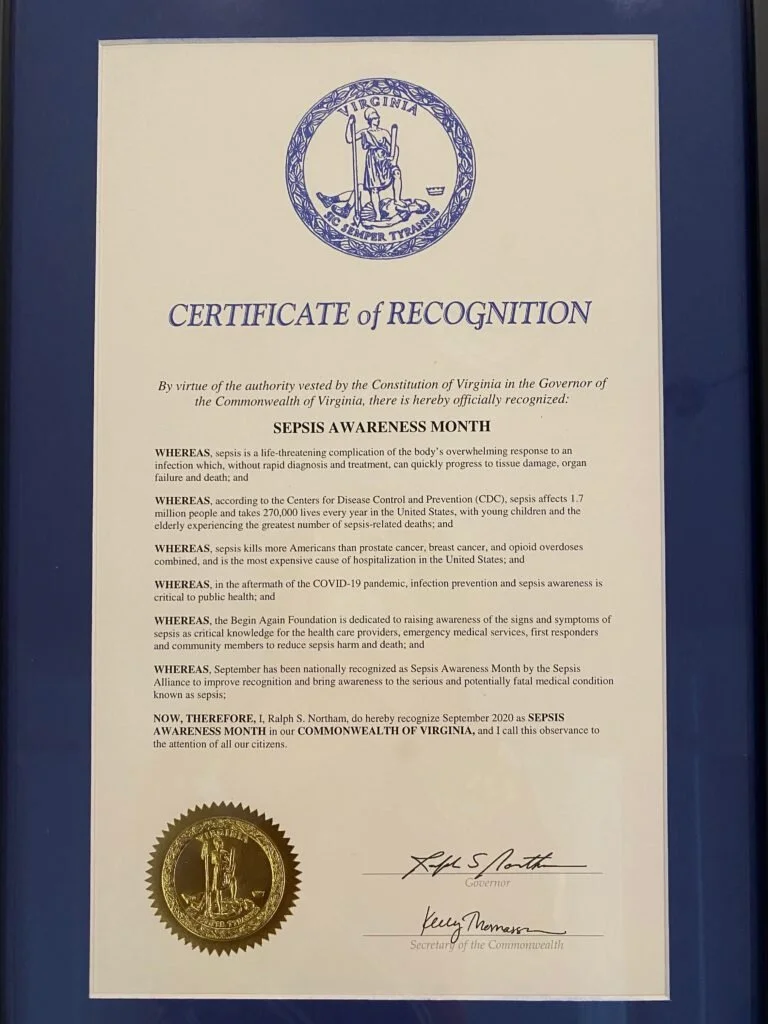





What is sepsis?
Sepsis is the body’s extreme response to an infection. Sepsis can result from an infection anywhere in the body, from a scratch gotten on the play ground or sports to influenza, COVID-19, urinary tract infections, toxic shock syndrome or meningitis.
SEPSIS IS A MEDICAL EMERGENCY.
Early detection can save lives.
Seek immediate medical care if you suspect someone has an infection that is not improving or is getting worse. Sepsis signs and symptoms include any of the following:
Fever or low temperature
Fast heart rate and rapid breathing
Rash that does not fade at touch
Cold hands and feet
Clammy or pale skin
Confusion, dizziness
Shortness of breath
Extreme pain or discomfort
Nausea and vomiting
Convulsions
It’s official
September is Sepsis Awareness Month in Virginia!
For Caregivers and other Loved Ones
When your loved one becomes ill with sepsis, it can be a scary time – one that most people aren’t prepared for. You may not know what sepsis is or how to help your loved one. The Sepsis Alliance has resources that may help you navigate this complex and difficult journey.



